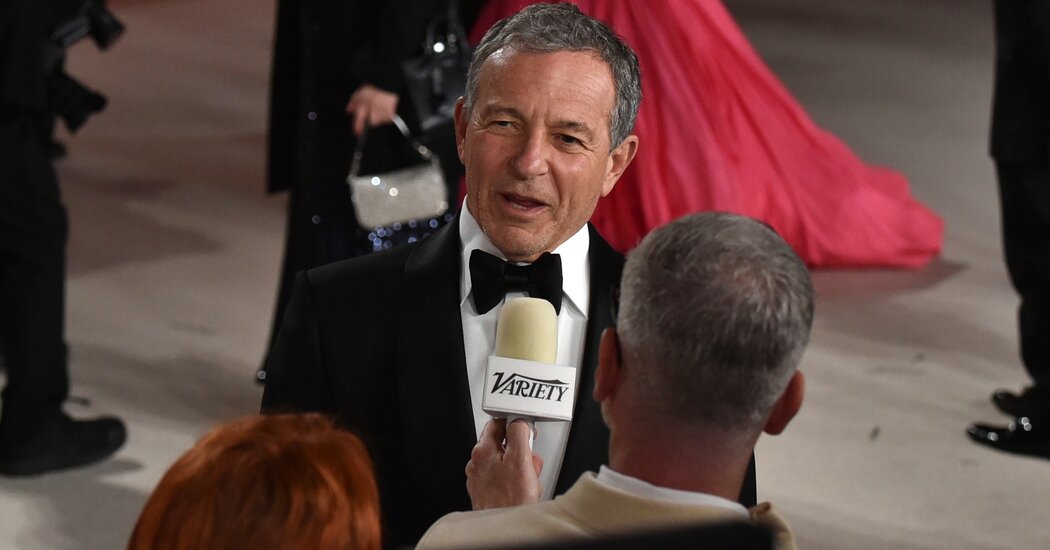To understand the forces that have been roiling the biggest media companies, look no further than Disney’s earnings. Streaming economics are improving
To understand the forces that have been roiling the biggest media companies, look no further than Disney’s earnings. Streaming economics are improving — considerably so. But not fast enough to offset declines in traditional television, which is in free fall.
Disney said on Wednesday that losses in its streaming business for the most recent quarter totaled $659 million, an improvement from a year earlier (and a vast improvement from the October-to-December period, when losses totaled $1.1 billion). Streaming revenue climbed 12 percent, reflecting a sharp increase in revenue per paid Disney+ subscriber, a metric investors watch closely.
The problem: Disney still relies on old-line TV channels for a colossal portion of its profit — and those outlets are being maimed by cord-cutting, sports programming costs and advertiser pullback. Disney’s linear networks (ESPN, Disney Channel, ABC, National Geographic, FX) reported $1.8 billion in operating income, down 35 percent from a year earlier. Revenue fell 7 percent.
Unlike most of its competitors, Disney has a safety net in the form of theme parks. Operating profit in the company’s Parks, Experiences and Products division climbed 22 percent, to $2.2 billion, as Disney resorts in Shanghai and Hong Kong finally began to recover from the pandemic. Disneyland Paris continued its attendance surge, which started last summer with the opening of a Marvel-themed expansion.
Attendance also increased at Disney World in Florida and Disneyland in California, although higher costs — the introduction of a new “Tron”-themed roller coaster, for instance — dented profitability in Florida. Disney Cruise Line bookings were strong, in part because of a recent expansion of its fleet, the company said.
It was Disney’s first full quarter under the second reign of Robert A. Iger, who returned as the chief executive in November. He replaced Bob Chapek, who was ousted by the board following a series of blunders, including the company’s response to contentious education legislation in Florida. The fallout from that matter has led to a legal battle with Gov. Ron DeSantis over Disney World’s future expansion and oversight.
As a whole, Disney generated $21.8 billion in sales, a 13 percent increase compared with last year, slightly surpassing analyst projections. Disney reported earnings per share of 93 cents, excluding certain items affecting comparisons, on par with analyst expectations.
After a period when investors pushed companies like Disney to chase streaming subscribers at any cost, they shifted last year to a new mind-set: Show us the profits. Disney has repeatedly said its flagship Disney+ service would be profitable by September 2024, but Wall Street has been skeptical.
Disney is in the midst of eliminating roughly 7,000 jobs, or roughly 4 percent of its global total, as part of a campaign to cut costs by $5.5 billion. There have been two rounds of layoffs so far; the final round is expected by the end of the month.
The company continues to pour money into original Disney+ programming. The third season of “The Mandalorian” arrived on the service in March. Another lavish series set in the “Star Wars” universe, “Ahsoka,” is scheduled to roll out on Disney+ this summer.
But the company, as part of its push toward streaming profitability, has pulled back on expensive “subscriber acquisition” efforts — marketing campaigns that try to convince people to subscribe. As a result, Disney+ subscriber counts have abated. The service has roughly 158 million subscribers worldwide, down 2 percent from December, with most of the loss coming from ultra-low-priced subscriptions in India.
Disney had 231.3 million subscriptions across Disney+, Hulu and ESPN+ in the quarter, down from 234.7 in December.
www.nytimes.com
